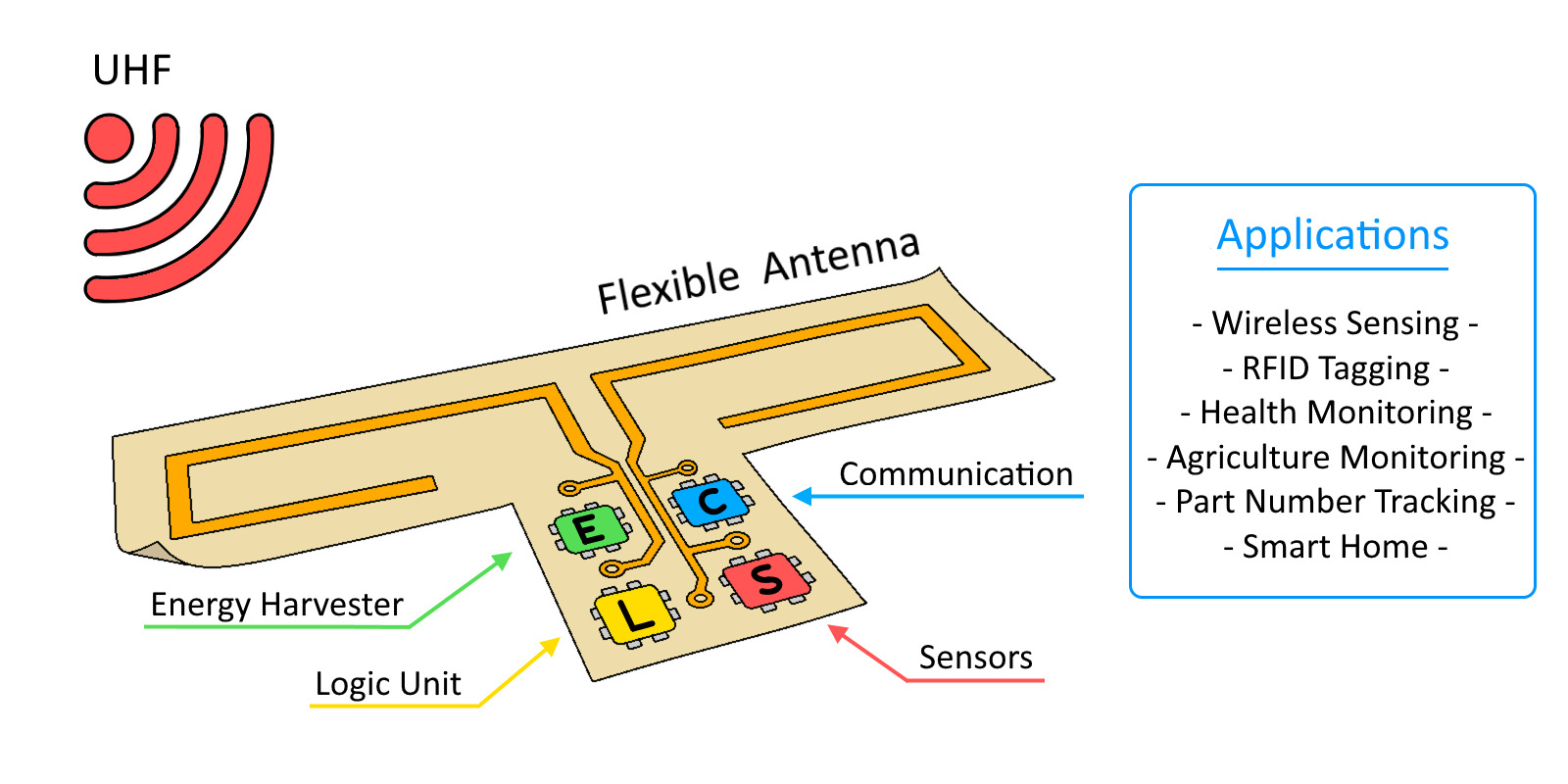Society 5.0 and the Internet of Things (IoT)
With the prevalence of the Internet of Things (IoT), there is increasing interest in using flexible electronics to realize wireless sensing and powering applications. The scope of this research group is on flexible electronics and their applications in different areas including high frequency, sensing and energy harvesting. This includes the design and simulation of high frequency passives and interconnects, device programming, the design and packaging of antennas for RFID applications, the investigation of different printing technologies to realize flexible electronics devices as well as the dielectric characterization of substrates for high frequency applications.
Design and simulation of high frequency interconnects for semiconductor packaging
On the other hand, to support the information technology era, there is a need for higher performing servers and computers. As such, there is a demand for multi-functional, compact, low power consumption and high speed processes. The semiconductor industry is looking at various chiplet technologies (2.5D, 3D packaging integration) towards this goal. This is also a key research theme in this laboratory, where we aim to optimize the interconnection of thin and flexible 3D packages based on packaging technology through simulation in order to achieve high density semiconductor devices.
The overarching goal of the research in this laboratory is towards enabling an IoT society through the widespread adoption of flexible electronics. To achieve this, the utilization of AI and big data technologies is also considered towards realizing a smart society.
モノのインターネット(IoT)の普及に向けて、ワイヤレスセンシングおよび電力供給アプリケーションを実現するためにフレキシブルエレクトロニクスを使用することに関心が高まっています。この研究室の範囲は、フレキシブルエレクトロニクスと、高周波、パワーやセンシングなどのさまざまな分野でのアプリケーションへの展開を目指しています。これには、高周波パッシブおよび相互接続の設計とシミュレーション、デバイスプログラミング、RFIDアプリケーション用のアンテナの設計とパッケージング、フレキシブル電子デバイスを実現するため、さまざまな印刷技術の調査、および高周波アプリケーション用の基板の誘電特性評価等の基礎研究からデバイスプログラミングなどの応用研究まで含まれます。
一方、IT時代を支えるためには、より高性能なサーバーやコンピューターが必要です。そのため、多機能で小型、低消費電力、高速処理のプロセッサが求められています。半導体業界は、この目標に向けて チップレット技術(2.5Dおよび3D パッケージ)のさまざまな方法を検討しています。これは、半導体デバイスの高密度化を実現するため、薄い フレキシブルな3D パッケージの相互接続をパッケージング技術に基づいて、シミュレーションで最適化することを目指しているこの研究室の重要な研究テーマでもあります。
この研究の目標は、フレキシブルエレクトロニクスの普及を通じてIoT社会を実現することです。また、スマート社会への実装に向けて、AIやビッグデータ技術の活用など幅広い研究開発の視点で進めていきます。



